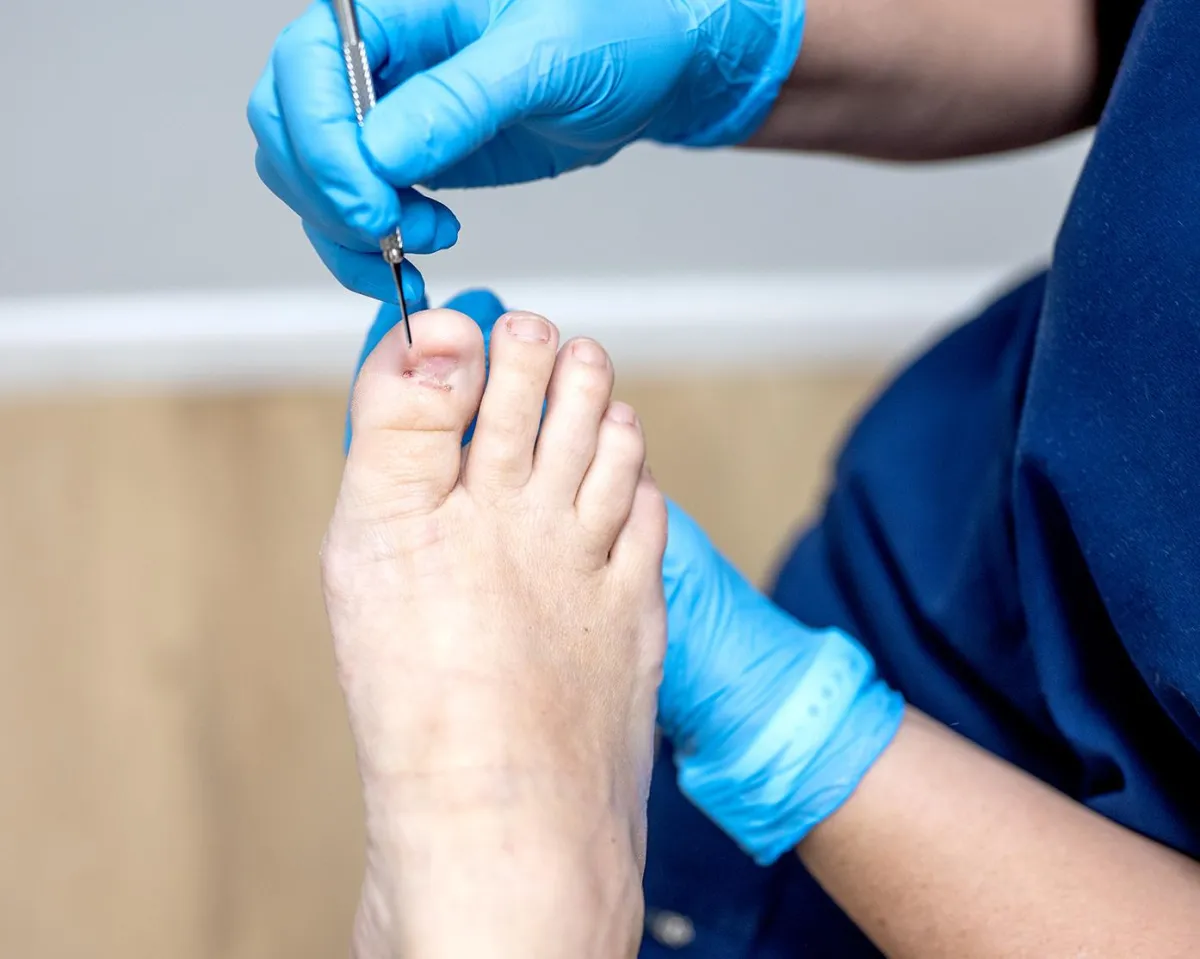Ingrown Toenails
Ingrown toenails are a common yet painful condition that can significantly impact your daily life. Whether it’s mild discomfort or severe pain, understanding the symptoms and causes of ingrown toenails can help you identify the problem early and seek appropriate treatment.
What is an Ingrown Toenail?
An ingrown toenail, medically known as onychocryptosis, occurs when the edge of the nail grows into the surrounding skin. This can lead to pain, swelling, redness, and even infection if left untreated. While the big toe is most commonly affected, any toenail can become ingrown.

How Does an Ingrown Toenail Present?
Patients with ingrown toenails often experience symptoms that can range from mild irritation to severe pain. Here’s what to look for:
Redness and Swelling:
The skin around the nail may appear red, swollen, or inflamed, particularly along one or both sides of the nail.
Pain or Tenderness:
Pain is often felt when walking, wearing shoes, or applying pressure to the affected toe.
Skin Irritation
The skin may feel sensitive or tender to the touch where the nail presses into it.
Signs of Infection:
In severe cases, the area may become warm, develop pus, or emit an unpleasant odor, indicating an infection.
Overgrown or Bulging Skin
The surrounding tissue may grow over the edge of the nail, creating a bulging appearance.
What Causes Ingrown Toenails?
Several factors can contribute to the development of an ingrown toenail, including:
Improper Nail Cutting: Cutting nails too short or rounding the edges can encourage the nail to grow into the skin.
Tight or Ill-Fitting Footwear: Shoes that compress the toes can put pressure on the nails, increasing the risk of ingrown toenails.
Trauma or Injury: Stubbing your toe, dropping something heavy on your foot, or repetitive pressure from activities like running can damage the nail and lead to ingrowth.
Genetics: Some people have naturally curved or wide nails, making them more prone to this condition.
Underlying Conditions: Fungal nail infections or conditions like diabetes can increase the risk of ingrown toenails.
How to Identify an Ingrown Toenail
You may have an ingrown toenail if you notice:
Persistent pain along the edges of your toenail.
Increased redness or swelling after wearing tight shoes or standing for long periods.
A feeling of pressure or throbbing in the affected toe.
Clear or yellow drainage around the nail, which may indicate infection.
It’s important to monitor these symptoms closely, as untreated ingrown toenails can worsen and lead to more serious issues, especially in individuals with diabetes or circulatory problems.
When to Seek Help
While mild cases of ingrown toenails may improve with home care, such as soaking the foot or wearing open-toed shoes, professional treatment is often needed if:
Pain and swelling persist or worsen.
You notice signs of infection, such as pus or a foul odor.
You experience recurring ingrown toenails.
You have a medical condition like diabetes or poor circulation that increases your risk of complications.
Understanding Your Condition is the First Step
At Neat Feet Podiatry Care, we’re here to provide expert advice and care for ingrown toenails. If you suspect you’re dealing with this condition, don’t ignore it. Proper diagnosis and treatment can help you avoid discomfort and complications, getting you back on your feet pain-free.
TESTIMONIALS
What Clients Have to Say
These reviews reflect patients' personal opinions and experiences and are not an endorsement of clinical outcomes. They are not solicited or curated by Neat Feet Podiatry Care. The information provided by reviewers is their own, and does not represent professional advice. Individual results may vary, and this should not be taken as a guarantee of specific outcomes. For accurate information about our services, please contact us directly

